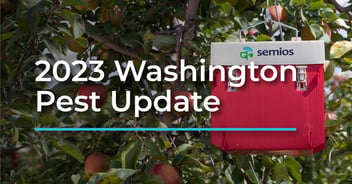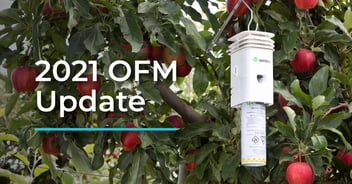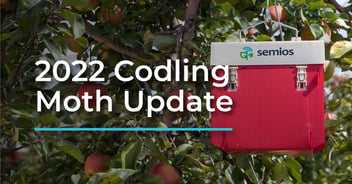.jpg?width=1350&name=_MG_4127%20(1).jpg)
A growing pest in Washington State, Oriental Fruit Moth (OFM) is quickly becoming a cause for concern amongst apple, cherry, and stone fruit growers.
We're seeing a significant spike in activity since our entomologists first detected OFM on a customer site near Prosser two years ago. Semios is now monitoring and trapping for OFM in the following counties:
Okanogan, Yakima, Douglas, Franklin, and Grant.
OFM is a different beast. It is active before and finishes after Codling Moth, and it's hard to find region-specific, time-tested management tactics you can rely on.
Here's a little information we've gathered to help you combat this pest in your orchard.
Leverage Experience From Other States
Currently, there is limited information on best practices for control of OFM in Washington, however, this is a common and major pest in similar crops in other growing regions.
Here are a few helpful resources and links to guide you:
University of California OFM Pest Management Guidelines
"Once the first moth is trapped, accumulate degree-days (DD) to estimate when the onset of the second flight will occur. Use a lower threshold of 45°F and an upper threshold of 90°F. The second flight should begin about 920 to 1,010 DD from the beginning of the initial flight; in some areas, however, the second flight may be seen as early as 800 DD.
Once the second flight has started, usually in May, accumulate degree-days. If a spray of methoxyfenozide (Intrepid) or chlorantraniliprole (Altacor) is planned, treat at 400 DD from the first trapped moth; otherwise, apply treatments from 500 to 600 DD. Treat at 400 to 500 DD for the third or fourth flight as fruit ripens."
Insecticidal Viruses - Be sure to talk to your Fieldman about these helpful products, too.
Use In-Canopy Data to Accurately Time Sprays
Semios weather stations and pheromone dispensers track temperature, barometric pressure, and humidity every ten minutes giving customers accurate insight into their orchard's climatic conditions - right down to the acre.
Using these granular insights, Semios users can see a detailed view into their orchard's pest, disease, and climatic conditions. Growers can keep track of degree days, trap counts, accurately predict pest flights, and can even see how this season compares to their last.
Set Trap Catch Alerts & Monitor Weekly Reports
Growers who use Semios can set custom trap catch alerts and be automatically notified via text or email when their catch threshold has been met. They can even access weekly trap catch reports that give them a summary of the pest activity in their orchard.
Semios networked camera traps provide entomologist-verified daily catch counts so you can save time and money scouting and stay up to date on your pest pressure in real time.
Install Long Lasting Pheromone Coverage
Expect up to four generations of OFM in a season. Semios' Variable Rate Mating Disruption provides long-lasting coverage while saving labor compared to alternative mating disruption solutions.
The pheromone dispensing rate is automatically adjusted based on your in-canopy conditions. You get increased pheromone application when pest activity is high, and reduced rates when the moths aren't flying. This unique approach means Semios OFM mating disruption only needs to be installed once a season, and you can count on it lasting for every flight.
We'll continue to monitor OFM through the end of the season and will update you with our post season analysis.





